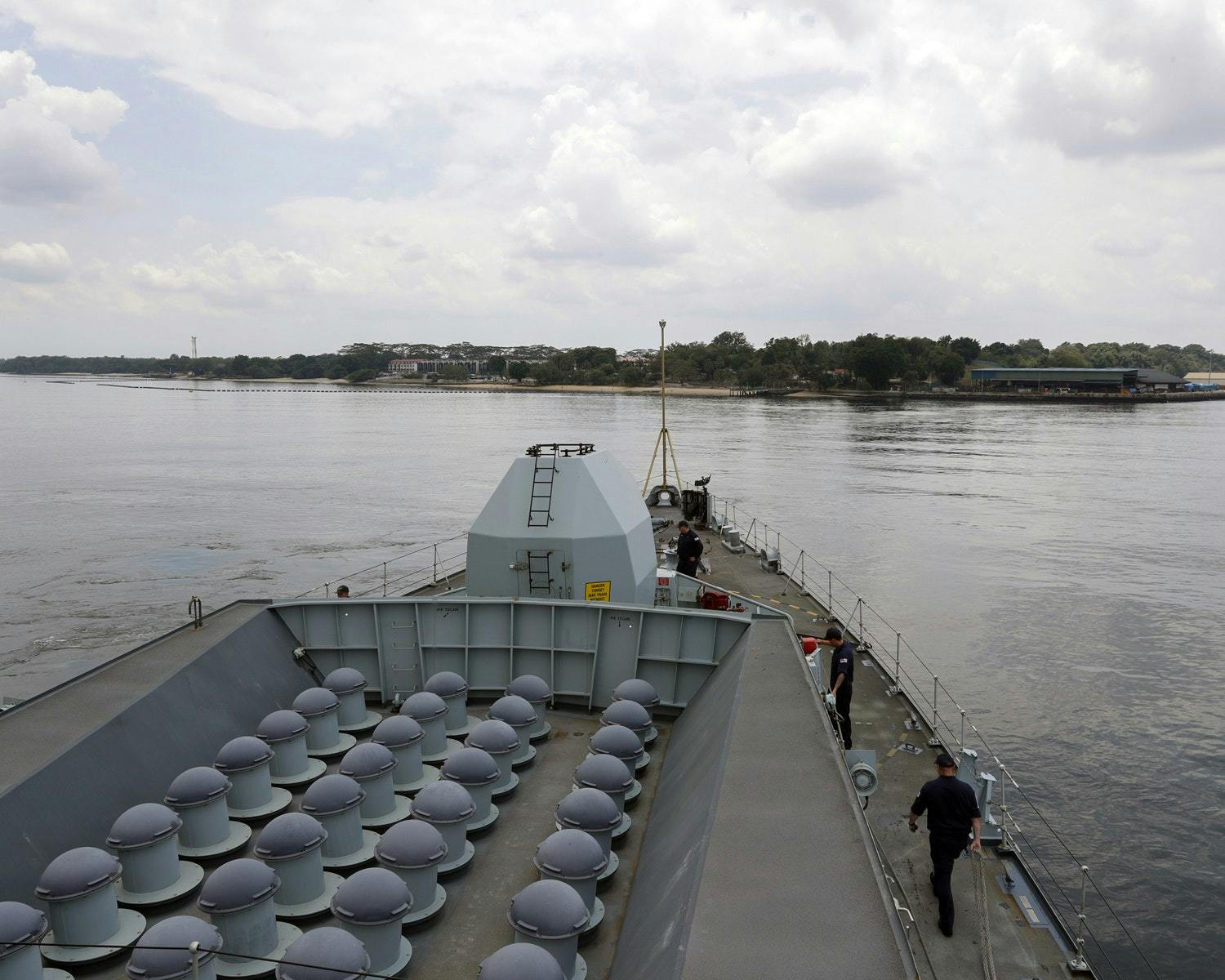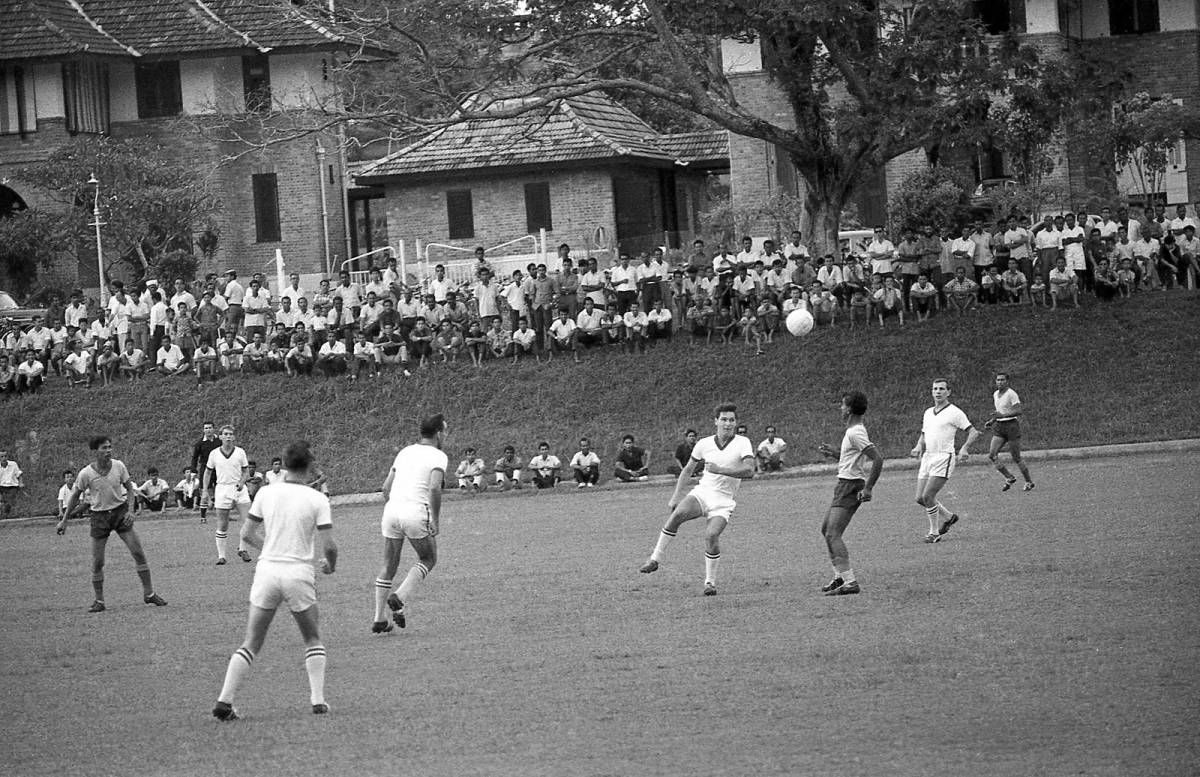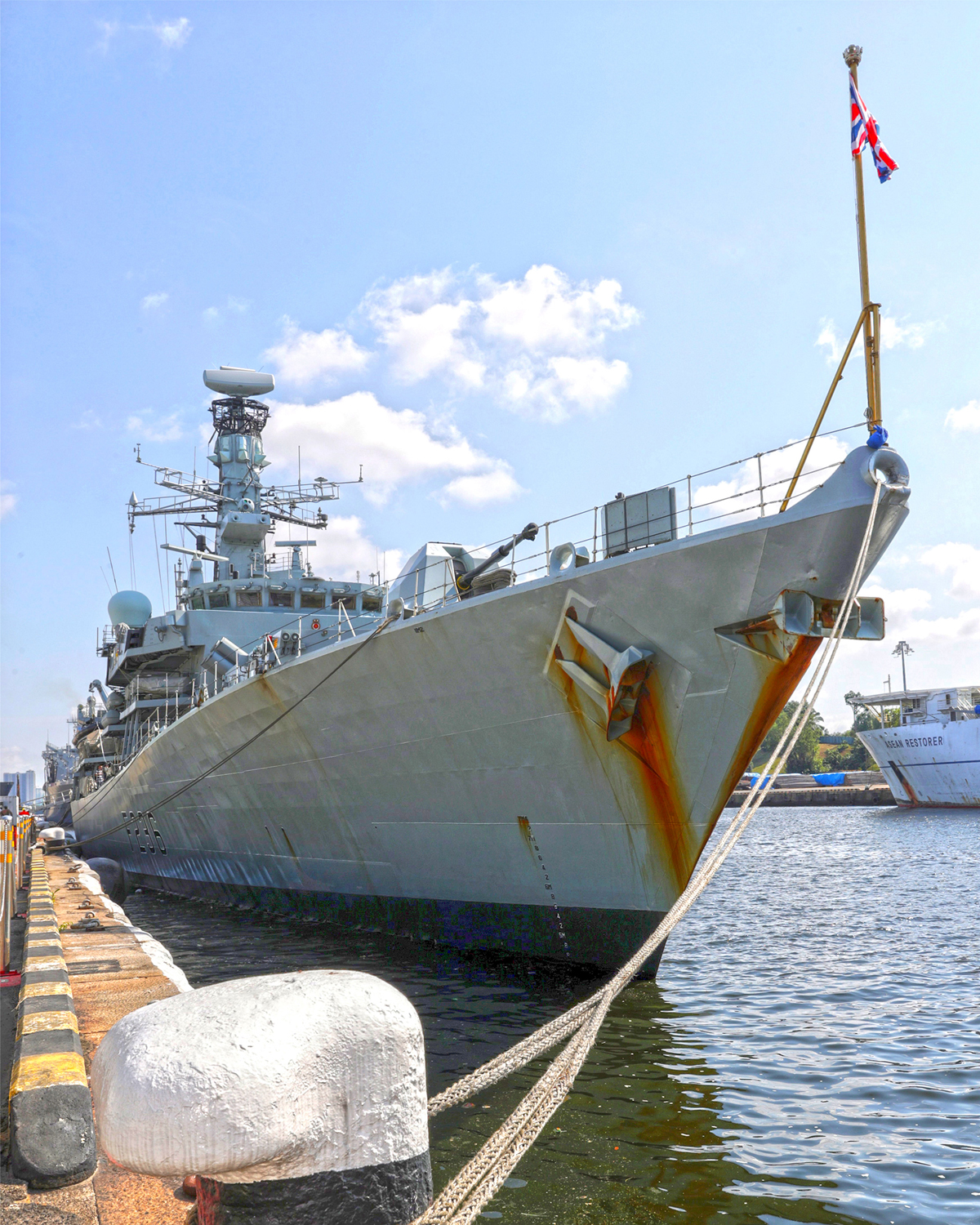Sembawang Naval Base - By entering your email address, you agree to our Terms of Use and Privacy Policy, and to receive emails from Time Out about news, events, offers and partner promotions.
Lace up your running shoes and explore the new Sembawang Heritage Trail, run by the National Heritage Board. This newly staged walking tour will take you through the stories of the region's rich maritime history and diverse communities, visiting up to 31 sites and nine heritage sites along the way.
Sembawang Naval Base
The sleepy north coast town may not seem like it, but it was once home to huge rubber plantations and was eventually taken over by a British naval base. People from all social classes met here, from the peasants to the sailors who lived there.
Hot Spring And British Naval History Feature In Nhb's Sembawang Heritage Trail
, dock workers in Kerala and Hong Kong, and even British naval officers who lived in luxurious black-and-white houses.
Sites on this trail include the Sri Balasubramaniar Holy Tree Temple, the former Sembawang Shipyard and former naval base houses. They paint a vibrant mix of Semba's people and cultures from the early 19th century until after World War II.
Strengthen our focus on these communities. Immerse yourself in the colorful stories and anecdotes of 29 past and present residents of Sembawang. They tell the story of the lives of the buildings that were once part of the neighborhood and the people who made their homes there. These include stories about the majestic former admiral's home, the old waterfront.
This route will reimagine the modern landscape with a busy naval base full of Royal Navy officers and shipyard workers running around landmarks like the beautiful Beaulieu House and Beaulieu Jetty.
Hms Montrose Visits Singapore
This route takes no more than 3 hours on foot by public transport and can easily be navigated by yourself. Printed trail maps and guides are available for a limited time at Sembawang Community Club, Sembawang City Council and Canberra Community Club, but electronic versions can also be downloaded from roots.gov.sg.
© 2023 Time Out England Limited and related companies are owned by Time Out Group Plc. All Rights Reserved. Time Out is a registered trademark of Time Out Digital Limited.
Sign up for our newsletter to enjoy the best content. It costs nothing. The airport is located in the northern part of the island of Singapore on the B. T. Sembawang estate, 10½ miles northwest. From Singapore Railway Station, 3 miles south of Naval Base, 1.5 miles north of Nisun Village.

First class road N. to the naval base, S. to Singapore. The train station at the naval base, the terminus of the Singapore Alostar Main Line railway branch.
This Week In 1982: Portsmouth Gets Ready For Falklands War
Flying conditions near Singapore are generally good. Bad flying weather is mostly associated with heavy rains, thunderstorms and thunderstorms and is common, but usually doesn't last long. Rain, usually in the form of heavy rainfall, falls 10 to 12 days per month all year round. Most likely between noon and 1800.
Storms are common in all months. They often do not reach the force of the storm, which is V intensity. It came to about 7 days a year. From June to October, thunderstorms known as "Sumatra Thunderstorms" usually occur at night. Tliev approaches from some western points and the frequency is about 7 per month at the peak of the season.
Thunderstorms occur 4 to 7 days a month in most months, and thunder is heard almost 50% of the days except in January and February. The amount of clouds varies greatly between day and night, and the sky is often almost cloudless at night, usually from T'10 to 8. Covered up to Visibility is always good during the day, except when heavy rain reduces visibility. Fog occurs 2-3 nights and early mornings a month from January to May, and occasionally in other months. It almost always disappears at 08:00 local time.
Data from BR. 1807 Admiralty Handbook, Royal Naval Air Stations, Domestic and Overseas, March 1949 and 1955.
The British Defence Singapore Support Unit
Equipment: First six Corsairs, six Vengeances and one Harvard, later two Seafire XVs, two Expeditors and three Auster Vs acquired in 1946. Several Sea Otters (ex 1700 'C' Flight) were absorbed in January 1946.
Flights HQ, 'B', 'C', & 'D' disembarked at ALBION on 28 April 1965. Flight A took off from RFA SIR LANCELOT on 19 June 1965.
The remainder of the squadron was transferred to ALBION on 2 July 1968. (Attached to flights 'B' and 'C' 5.) Get off at ALBION 0508.1968.

In 1934/35 part of the Bukit Sembawang Rubber Estate on the island of Singapore was purchased by the Air Ministry to build a turf airfield for the Royal Air Force. Construction approval was given in 1936, and British Army engineers began work the following year. The base was intended to be operated by two RAF bomber squadrons, but the airfield was destroyed in 1939 by P.G.L. Kazaret RN. The site is planned to be developed as a naval airfield and air repair facility to support the proposed Eastern Fleet of up to four aircraft carrier fleets. The runway has three prepared strips running N/S, NE.SW and NW/SE, with a maximum length of approx. 1, 100 Yards: The shortest N/S is rarely used, the other two were extended to 300 yards in March 1940.
Royal Navy Leaves Singapore Causing Deaths In The Process
Due to the course of the war in Europe and the deteriorating situation in the Far East, these plans were put on hold and the station, almost complete as an operational airfield, was transferred back to Royal Australian Air in May 1940. A unit under the command of Group Captain J. McCauley of the RAAF. Of the 813 and 824 Naval Air Squadrons that arrived on the base on 17 March 1940, each equipped with nine Swordfish Mk.1s, only two RN squadrons were recorded operating from RNAS Sembawang during this period. They moved from nearby RAF Kallang after disembarking from HMS EAGLE the day before the ship arrived at naval dock for repairs. The two companies remained at Sembawang until reembarked on 8 May.
The first operational units arrived in July and August 1940. 1 and no. Eight of the Royal Australian Air Force, each equipped with 12 Lockheed Hudson medium bombers, departed later in November. In early 1941, 21 Squadron R.A.A.F. It moved from Seletar to refit Brewster Buffalo fighters and briefly operated in Sembawang before deploying to Malaya. 453 R.A.A.F., which also operated Platoon No. Buffaloes, arrived in August 1941 and operated there until deployed to Malaya in mid-December 1941.
On December 8, 1941, Japanese forces invaded Malaya, and on the same day the Dutch government placed several battalions under the operational control of the British Far East Command under a mutual defense assistance agreement with the United Kingdom. On the same day, the VLG-III was ordered to reach Sembawang Airfield in Singapore. The VLG-III, consisting of three bomber squadrons and 22 Glenn Martin 139 bombers of the Royal Dutch East Indies Air Force, was sent back to Java the same day for training as none of the crew had been trained for night flying. When you return, you can send another squadron back for training. With the deteriorating situation on the island and the loss of the squadron, the remaining Dutch bombers and fighters were recalled to Java on 22 January 1942.
The 1st Squadron moved to Sumatra in late January 1942, leaving five useful Hudsons by Christmas. On 22 December, 453 Squadron, which suffered severe losses, withdrew to Sembawang on Christmas Eve with only three aircraft now serviceable, and was joined by 21 Squadron, which withdrew to Singapore with six aircraft. The new unit, 21/453 Squadron, was filled with replacement aircraft assignments. The joint force continued fighting until late January, when it was separated again with a few aircraft remaining. 21 Squadron personnel were then dispatched to the Dutch East Indies, while No. 453 continued to operate the remaining six Buffaloes. In early February, only four operational aircraft remained and were transported to Java, while the squadron's ground crew was evacuated by boat. Singapore surrendered to the Japanese on February 15, 1942.
Tony Van Eijk
During the Japanese occupation, King Semba came under the control of the Japanese army and the Japanese navy, the two powers surprisingly despised each other, and the island of Singapore was divided into north and south, leaving the north under naval control and the army under control. South.
After Japan's surrender in the colonies, H.A. Traill OBE., RN (former commander of the escort carrier HMS EMPRESS) has arrived to take control of the airfield and prepare it for reopening. They found about 90 Zero fighters and about 700 Japanese officers and men at the airfield. The station was full of tunnels and pits and was in quite a mess. The Japanese were working to build a north-south airstrip using British prisoners of war and there were at least a dozen abandoned public works steam rollers on what would later be called the Japanese airstrip.
To work

Military drone range, laser range finder military, military range bags, military range targets, long range military radio, military radio range, military range finder, military long range binoculars, range rover military discount, military range rover, range of military drones, military range bag

0 Comments